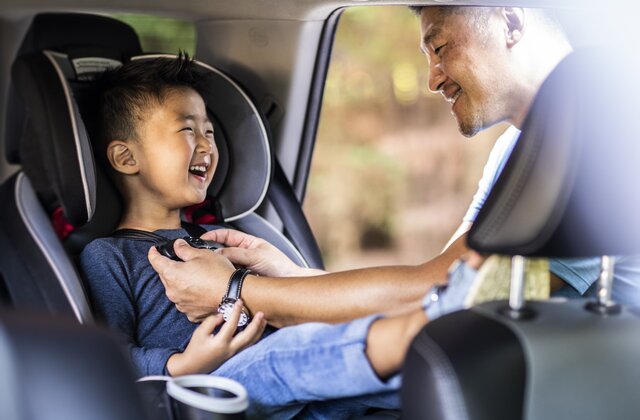Families who travel with children have an exciting and fulfilling experience but are also responsible for keeping their kids safe while on the road. One crucial aspect of child safety during travel is using appropriate car seats. These seats play a vital role in protecting young passengers in the event of a collision, and using them correctly can significantly reduce the risk of injuries. This article will provide essential tips for on-the-go families on traveling safely with these seats.

Selecting the Right Child Seat for Age and Size
Selecting the correct child seat for a child’s age and size is a crucial first step in ensuring their safety during travel. The market has different types of child seats designed for different age groups and weight ranges. Infant seats are suitable for newborns and young babies, while convertible seats can be used in both rear-facing and forward-facing positions, accommodating toddlers and preschoolers. When kids outgrow their convertible seats but aren’t tall enough to use the seat belt alone, booster seats are a great solution. By carefully following the manufacturer’s guidelines and considering the child’s age and size, parents can make an informed decision and provide the appropriate level of protection during their journeys.
Rear-Facing for Infants and Young Toddlers
The safest option for infants and young toddlers is a rear-facing car seat. This type of seat provides support for the child’s head, neck, and spine, which helps reduce the impact of sudden stops or collisions. It is recommended to keep children in a rear-facing position for as long as possible, ideally until they reach the maximum height and weight limits specified by the car seat manufacturer. This practice significantly reduces the risk of serious injuries and enhances the child’s safety while traveling.
Proper Installation of Child Seats
Even with the correct child seat, its effectiveness depends on proper installation. Installing it correctly can be challenging but essential for ensuring optimal safety. Parents should carefully read the manual to understand the installation requirements. Many communities offer free car seat checks, where certified technicians can help parents ensure their child seats are securely and correctly installed. Taking advantage of such resources can provide valuable peace of mind and enhance the child’s safety during travel.
Harnessing and Buckling Up Correctly
Once the child seat is properly installed, focusing on proper harnessing and buckling up is crucial. It’s essential to ensure the harness straps are snugly adjusted around your child’s body. This provides a safe and secure fit during your travels. Remember to check for any slack and make necessary adjustments for maximum protection. When using a rear-facing car seat, ensure the harness straps are at or below the child’s shoulders. The straps should be at or above the shoulders for a forward-facing seat. Placing the chest clip at the armpit level is essential to ensure that the child is safely restrained, which will keep the harness straps in place. These small but significant adjustments can make a substantial difference in the effectiveness of the child seat in protecting the child during travel.
Regular Inspection and Maintenance
These seats should be regularly inspected for wear, tear, or damage. Over time, straps, buckles, and the chair may show signs of wear, affecting their performance. Regularly checking these components and the overall condition of the child seat is essential for identifying any potential issues. If any problems are detected, it is crucial to address them promptly by contacting the manufacturer or replacing the seat if necessary. Keeping the child’s seat clean and debris-free is vital for proper functioning and hygiene.
Safety Beyond the Car Seat
While child seats are a critical safety measure, it is also essential to consider overall vehicle safety. Children should always sit in the vehicle’s back seat, away from active airbags, as front airbags pose a significant risk to young passengers. Ensuring that all passengers, including adults, wear their seat belts at all times is essential for maintaining a safe travel environment. By consistently modeling safe behavior, parents set a positive example for their children, instilling the importance of seat belt usage and overall safety during travel.
Conclusion
Traveling with children requires careful attention to their safety, and car seats play a pivotal role in providing that protection. Selecting the right seat based on a child’s age, size, and weight is the first step in ensuring their safety on the road. Proper installation and correct harnessing are crucial for maximizing the car seat’s effectiveness. Regular inspection and maintenance are essential to identify potential issues and ensure the seat’s continued safety. Additionally, overall vehicle safety, such as proper seating positions and seat belt usage, further enhances the safety of young passengers during travel. Following these essential tips for traveling safely with these seats, on-the-go families can embark on their adventures with peace of mind, knowing they have taken all the necessary precautions to protect their precious cargo.



